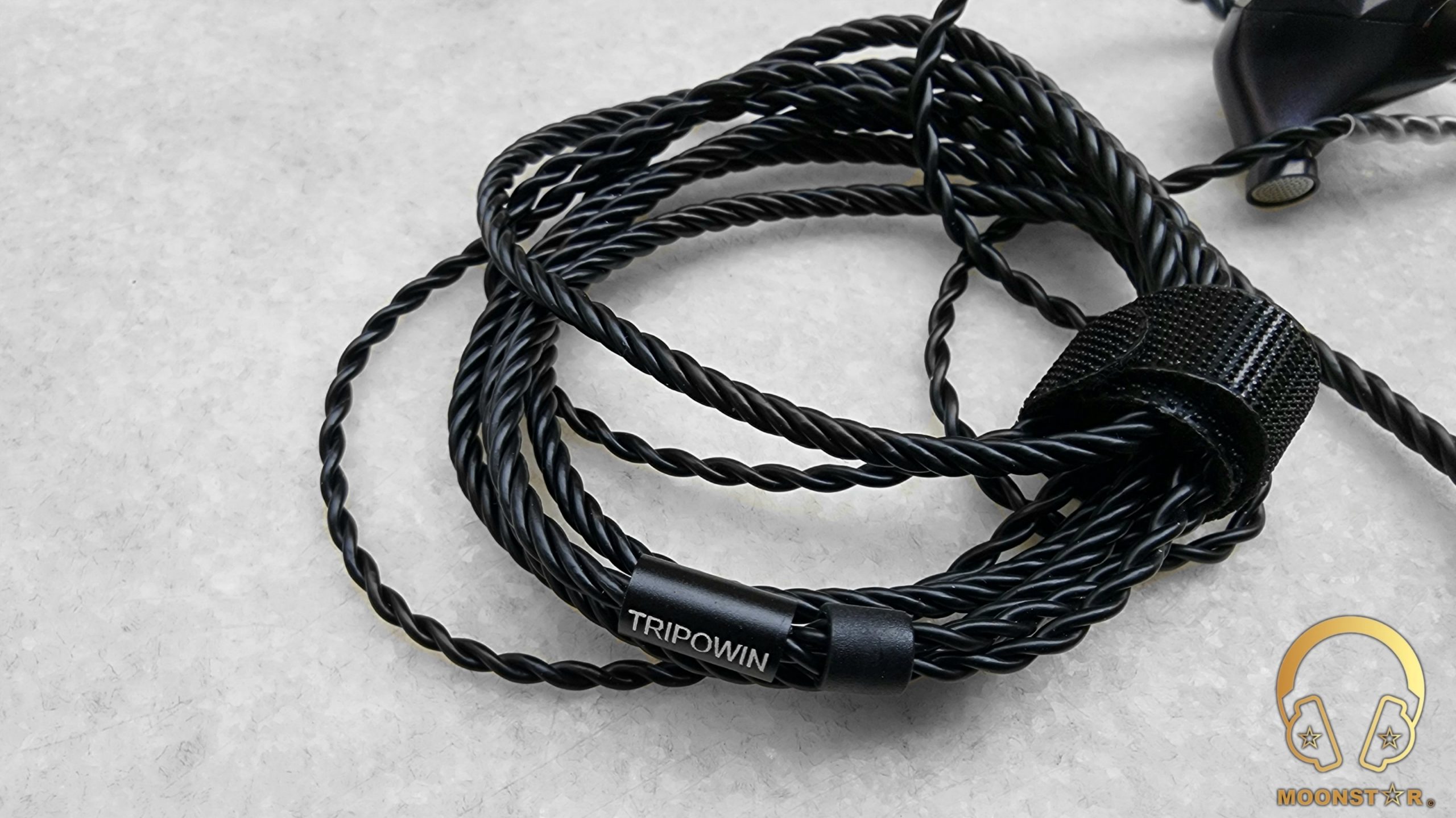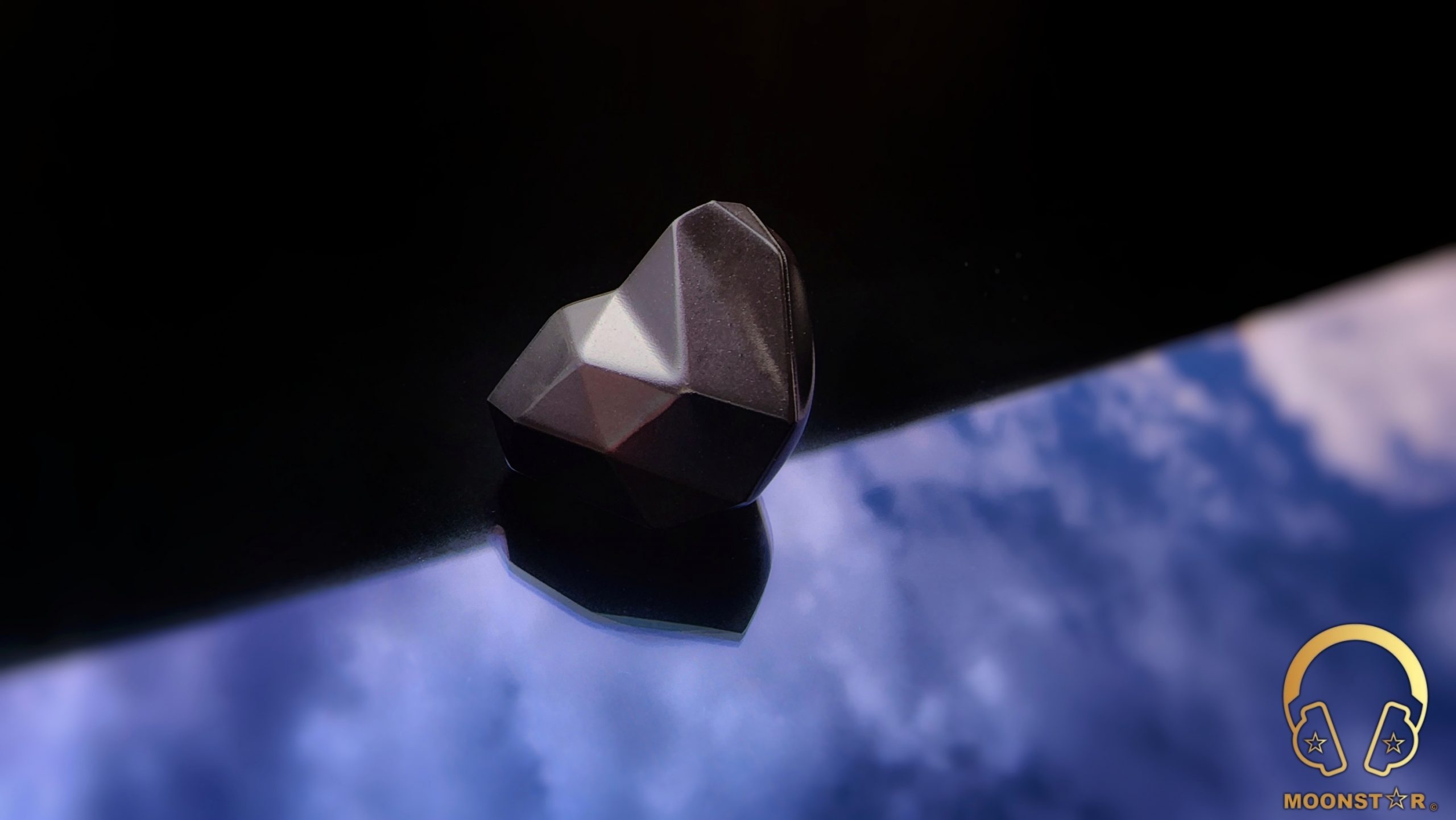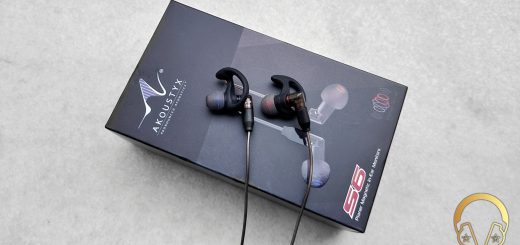Tripowin Rhombus Review

Tripowin Rhombus Review
Introduction:
Tripowin is specialized in the development and production of portable audio equipments such like Earphones, Headphones and Cables. Tripowin is known for its closely partnering with the audiophile community. The Rhombus that I will now review for you is the companies latest In-Ear Monitor. The Rhombus features a 1BA +1 DD Hybrid Driver configuration that is located inside a Software Engineered CNC machined aerospace-grade aluminum with a unique appearance.

Disclaimer:
The Tripowin Rhombus was provided to me by Linsoul Audio for review purposes. I am not affiliated with Tripowin or Linsoul Audio beyond this review and these words reflect my true and unaltered opinions about the product.
Price & Availability:
The actual price of the Tripowin Rhombus is 79,00 US$. More information’s can be found under the link below;
Package & Accessories:
The Tripowin Rhombus came inside a relative small and plain black cardboard box with the Tripowin branding in silver color on the top.

Inside the box are the following items;
- 1 x pair of Tripowin Rhombus In-Ear Monitors
- 1 x Detachable Cable with 2-Pin Connectors
- 3 x pairs of White Silicone Ear Tips
- 3 x pairs of Black Silicone Ear Tips
- 1 x Carry Pouch
- 1 x Print Materials

The Tripowin Rhombus comes with a detachable 4core copper cable (specific material unknown) that has a braided design and a pretty soft PVC isolation. The detachable cable is pretty lightweight and shows only a very low amount of microphonic effects.

The detachable cable comes with 0.78mm diameter 2-Pin male connectors that are protected with a metal housing in black color. The right connector has a red color indicator while the left side is transparent.

The cable has a metal Y splitter with the Tripowin branding on the top and a plastic chin slider in black color.

The cable comes with a 3.5mm headphone plug that is protected with a straight profiled metal housing in black color.

Design & Build Quality:
The monitor housing of the Tripowin Rhombus has an eye-catching unique design with its multi-faceted polygon front shape. The housing is made from Software Engineered CNC machined aerospace-grade aluminum material with a dark fisnish. Each monitor features 1x Knowles 33518 balanced armature + 1x 10mm diameter LCP/PU diaphragm Dynamic Driver that are located inside a separate acoustic chamber. Each driver chamber is joined at a central chamber before the nozzle to tonally mix the sounds and remove unwanted harmonic resonance.

The inner surface sports a slightly angled sound nozzle with a metal mesh on the top. Here is also a small opening near the nozzle that is dedicated for the dynamic driver.

The inner surface of the left monitor sports the Tripowin and the right one has the Rhombus branding in white color.

On the top of the monitor shells are the 0.78mm diameter 2-Pin female connectors that do show a tight and secure connection.

The build quality of the monitors is excellent, which doesn’t show any remarkable gaps or imperfections.

Fit, Comfort & Isolation:
The Tripowin Rhombus has a very ergonomic shape that fits perfectly in to my average sized ear concha. The passive noise isolation of the Rhombus is on an average level that is sufficient enough for the use in public transport like metro, bus or train.

Technical Specifications:
- Driver Type : 1xBA + 1DD Hybrid Driver Configuration
- Dynamic Driver : 1x 10mm diameter LCP/PU Diaphragm
- BA Driver : 1x Knowles 33518 Balanced Armature Driver
- Frequency Response : 20Hz ~ 20 kHz
- Sensitivity : 105dBSPL/mW
- Impedance : 24Ω
- Connector Type : 0.78mm Diameter 2-Pin Connector
- Plug : 3.5mm Single Ended
- Cable Length : 120cm
Drivability & Pairing:
The Tripowin Rhombus is a very easy to handle In-Ear Monitor thanks to its pretty low impedance of only 24Ω and a sensitivity of 105dB. This makes it compatible with relative weak sources such like Smartphone’s, Tablet’s and MP3 players with weak amplification.

Equipment’s used for this review:
- IEM’s : Tripowin Rhombus, TFZ King II
- DAP&DAC’s : FiiO M11 Plus ESS, iBasso DC06
Albums & tracks used for this review:
- Adele – My Little Love (Spotify)
- Randy Crawford – On Day I Will Fly Away (Flac 16bit/44.1kHz)
- Hayley Westenra – Odyssey Album (Dezzer HiFi)
- Dionne Warwick – Walk On By (Flac 16bit/44.1kHz)
- Sarah McLachlan – Angel (Flac 24bit/48kHz)
- Sertap Erener – Aşk (Flac 16bit/44.1kHz)
- Edith Piaf – Non Je Ne Regrette Rien (Flac 16bit/44.1kHz)
- Diana Krall – So Wonderful (DSF)
- Aretha Franklin – I Say A Little Payer (Flac 24bit/96kHz)
- Sonya Yoncheva – (Giuseppe Verdi) II Trovatore, ActI (Flac 24bit/96kHz)
- George Michael – Don’t Let the Sun Go Down on Me (Flac 24bit/192kHz)
- David Bowie – Heroes (Flac 24bit/192kHz)
- Elton John – Rocket Man ((Flac 24bit/96kHz)
- Barry White – Just The Way You Are (Flac 24bit/48kHz)
- Isaac Hayes – Walk On By (Flac 16bit/44.1kHz)
- Sting – Englishman in New York – (Flac 24bit/48kHz)
- Eric Clapton – Wonderful Tonight (Flac 24bit/96kHz)
- B. King – Riding With The King (Tidal Hi-Fi)
- Dave Gahan – Kingdom (Tidal Hi-Fi)
- U2 – Sunday Bloody Sunday (Flac 16bit/44.1kHz)
- Bro Safari, UFO! – Drama (Deezer HiFi)
- Armin Van Buuren – Vini Vici (Flac 16bit/44.1kHz)
- Daft Punk (feat. Panda Bear) – Doin’ it Right (Flac 24bit/96kHz)
- Jo Blankenburg – Meraki (Spotify)
- Lorde – Royals (Flac 24bit/48kHz)
- Massive Attack – Angel (Flac 24bit/48kHz)
- Toutant – Rebirth (Deezer HiFi)
- Gogo Penguin – Raven (Flac 24bit/192kHz)
- Gogo Penguin – Murmuration (Flac 24bit/192kHz)
- Photek – The Hidden Camera (Flac 24bit/96kHz)
- Portishead – It Could Be Sweet (Spotify)
- Max Richter – On the Nature of Daylight (Flac 24bit/96kHz)
- Charly Antolini – Duwadjuwandadu (Flac 24bit/192kHz)
- Abel Korzeniowski – Dance For Me Wallis (Deezer HiFi)
- Ferit Odman – Look, Stop & Listen (Flac 24bit/192kHz)
- Chopin – Nocturn No. 20 In C-Sharp Minor (Flac 16bit/44.1kHz)
- Fazıl Say – Nazım Oratoryosu (Live) (Flac 16bit/44.1kHz)
- Vivaldi – Le QuarttroStagioni “The Four Season” (Deezer HiFi)
- Otto Liebert & Luna Negra – The River (Flac 24bit/192kHz)
- Lunatic Soul – The Passage (Flac 16bit/44.1kHz)
- Deftones – My Own Summer (Shove it) (Flac 16bit/44.1kHz)
- Metallica – Sad but True (Flac 24bit/96kHz)
- Metallica – Master of Puppets (Flac 24bit/96kHz)
- Opeth – Windowpane (Flac 16bit/44.1kHz)
- Megadeth – Sweating Bullets (Tidal Hi-Fi)
- Muse – Hysteria (Flac 16bit/44.1kHz)
- Rush – Leave That Thing Alone (Flac 16bit/44.1kHz)
- Slayer – Angel of Death (Spotify)
- Liquid Tension Experiment 2 – Acid Rain (Spotify)
- Yosi Horikawa – Bubbles (Spotify)
The Sound:
The Tripowin Rhombus shows a tad warmer than neutral and has a close to U shaped sound signature. The lower frequency region has a fairly linear response with moderate level of depth, speed and intensity, while the midrange is relative airy but a bit dry and thin its presentation with focal point in the upper midrange register. The treble area shows a sufficient grade of airiness and sparkle, which is in general free of sibilance and over sharpness.
This review has been written after a burn-in period of 50 Hours. I have used the stock cable and the black silicone ear tips which are included to the package.

Sound Analysis (Bass / Midrange / Treble / Soundstage):
The lower frequency region of the Tripowin Rhombus is produced by the 10mm dia. LCP/PU Diaphragm Dynamic Driver, which shows a linear and nicely controlled response from the subbass up to the midbass area. The dynamic driver is able to produce sufficient level of subbass depth and extension, while the tonality is on the softer and warmer side neutral. The rumble and intensity of this area is on a moderate level while listen to songs like Armin Van Buuren’s “Vini Vici“, Bro Safari, UFO’s “Drama” or to Daft Punk’s “Doin’ it Right” for that I would wish a bit more extension.
The midbass region of the Tripowin Rhombus stands out in terms of speed and authority that was pretty audible while listen to some complex bass passages such like Gogo Penguin’s “Murmuration” or to Charly Antolini’s “Duwadjuwandadu”. However, I would like to hear slightly more impact and fullness while listen to instruments such like a bass guitar, snare drum or tom.

The midrange Tripowin Rhombus has a tad warmer than neutral tonality and is slightly recessed due to the relative U shaped sound signature. The general midrange presentation is a bit recessed especially when I do listen to male vocals, while the sense of airiness and level of resolution is quite decent.
The lower midrange shows an average level of depth and clarity, when I do listen to male vocals like Sting, David Bowie or Dave Gahan or instruments such like trumpets and violas. The upper midrange of the Tripowin Rhombus is more highlighted detailed and energetic compared to the lower midrange, which creates a pretty lively and clear atmosphere while listen to female voices such like Randy Crawford, Ade or Edith Piaf. Instruments on the other hand such like electro guitars

The treble range of the Tripowin Rhombus is less pronounced compared to the upper midrange area, which shows an audible roll-off around the 5-6 kHz region. The treble range sounds in general fairly smooth and forgiving, while the sense of presence and clarity is somewhat defused because of the roll-off in the lower treble area.
The upper treble region is a bit more highlighted and detailed compared to the treble rest of the treble spectrum, which shows an audible peak around the 8 kHz region that drops in a fast yet controlled manner. The general treble presentation of the Tripowin Rhombus is not sharp and aggressive when I listen percussions and strings, which makes quite ideal for longer listening periods, while I would wish a bit more sharpness and resolution. The level of airiness and sparkle of this area is on an adequate level.

The Tripowin Rhombus shows a sufficient performance in terms of separation and placement of instruments and vocals. The soundstage shows a good sense of wideness, while the depth of the stage is on an average level.
Comparison:
Tripowin Rhombus versus TFZ King II:
The TFZ King II has a tad warmer tonality and sounds also in general fuller compared to the Tripowin Rhombus that has a less saturated overall sound profile. The lower frequency region of the Rhombus is slightly less highlighted than those of the King II, while it offers a better level of resolution, speed and authority when I do listen to complex bass passages like such like in songs like Gogo Penguin’s “Raven” or Charly Antolini’s “Duwadjuwandadu”.
The midrange of both IEM’s shows a moderately warm tonality that, while the TFZ King II shows a tad more forward vocal and instrument presentation. The upper midrange of the Tripowin Rhombus is a bit more pronounced and detailed that is able to deliver more information when I do listen to female vocals or to instruments such like a violin or piano. The lower midrange of the TFZ King II sounds slightly fuller hand has a bit more depth that was audible when I do listen to male voices or to strings like violas or brass instruments such like trumpets.
The treble range of both the TFZ King II and Tripowin Rhombus is shown in a relative smooth and fatigue-free manner along with an adequate level of extension. The lower treble region of the TFZ King II sounds slightly more highlighted/energetic that is able to produce a bit more clarity and definition compared the Tripowin Rhombus. The upper treble region of both IEM’s shows a pretty close performance in terms of airiness and sparkle, while the Rhombus has a slightly advantage when it comes to the extension.
Both In-Ear Monitors are pretty close in terms of soundstage performance and imaging. However, the Tripowin Rhombus is bit more successful in terms of soundstage depth, while the wideness of the stage fairly identical.

Conclusion:
The Tripowin Rhombus is a very solid and extremely fancy looking In-Ear Monitor that comes with a 1xBA+ 1xDD Hybrid Driver configuration, which offers a quite modest performance when it comes to the sound with its smooth and relaxed yet somewhat grainy presentation.
Pros & Cons:
- + Smooth & Fatigue-Free Overall Presentation
- + Ideal for does who a sensitive to Upper Midrange and Treble brightness/sharpness
- + Fancy looking Monitor Design
- + Solid Build Quality
- – Average Technical Performance
- – A bit too relax in the Lower Treble Area
- – Minimalistic Packaging
Thank you for the Read!












Mükembel😊